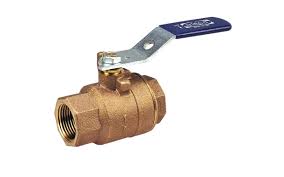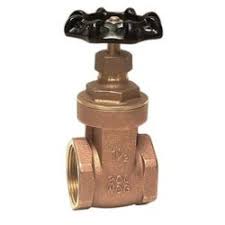Bronze Valve VS Brass Valve

The Application of Bronze Valve and Brass Valve
When it comes to high-performance valve solutions, the choice between Bronze Valve and Brass Valve can be a crucial decision. The difference between brass and bronze valves lies in their material composition and specific applications. While both offer excellent corrosion resistance, Bronze Valve is known for its superior strength and durability, making it a preferred choice for heavy-duty industrial applications. On the other hand, Brass Valve is often favored for its aesthetic appeal and cost-effectiveness, particularly in plumbing and HVAC systems. Similarly, the difference between brass and bronze ball valves lies in their suitability for different working environments and pressure ratings. As a leading manufacturer, Cameron offers a wide range of high-quality Bronze and Brass Valves, catering to diverse industrial and commercial needs.
What Are The Types Of Bronze Valve and Brass Valve?
Bronze Valves:
- Bronze Gate Valves: Used for shutoff applications in water, steam, and oil/gas systems.
- Bronze Globe Valves: Offer precise flow control in heating, cooling, and industrial processes.
- Bronze Ball Valves: Provide reliable shut-off and throttling in a wide range of applications.
- Bronze Check Valves: Prevent backflow in pipelines carrying liquids or gases.
- Bronze Butterfly Valves: Offer compact design and fast actuation for flow control.
Brass Valves:
- Brass Gate Valves: Economical shutoff valves used in plumbing, HVAC, and light industrial applications.
- Brass Globe Valves: Precise flow regulation in domestic and commercial water systems.
- Brass Ball Valves: Versatile valves for on/off control in plumbing, HVAC, and low-pressure industrial systems.
- Brass Check Valves: Prevent backflow in water supply lines, boilers, and other low-pressure systems.
- Brass Angle Valves: Space-saving design for plumbing fixtures like faucets and showerheads.
What Is Bronze Valve and Brass Valve?
Bronze Valves and Brass Valves are two distinct types of industrial and commercial valves, each with its own unique properties and applications. Bronze, an alloy of copper and tin, is renowned for its exceptional strength, corrosion resistance, and durability, making it a popular choice for heavy-duty applications such as power plants, refineries, and chemical processing facilities. Brass, an alloy of copper and zinc, is known for its affordability, ease of machining, and aesthetic appeal, making it a common selection for plumbing, HVAC, and general industrial uses. The choice between Bronze Valves and Brass Valves often comes down to the specific requirements of the application, with factors like pressure, temperature, and chemical exposure playing a crucial role in determining the most suitable valve material.
How to Select the Right Bronze Valve and Brass Valve?
When selecting the appropriate Bronze Valve or Brass Valve for a specific application, it’s essential to consider several key factors. These include the operating pressure, temperature range, media compatibility, and any potential exposure to corrosive environments. Bronze Valves, with their robust construction and superior strength, are often the preferred choice for high-pressure, high-temperature, or corrosive applications, such as those found in industrial processing plants or power generation facilities. Brass Valves, on the other hand, are better suited for less demanding applications, such as in plumbing, HVAC systems, and light industrial settings, where their affordability and ease of maintenance make them a practical solution. Careful evaluation of these criteria, coupled with a thorough understanding of the system requirements, will help ensure the selection of the right Bronze Valve or Brass Valve for the job.
Features of Bronze Valve and Brass Valve
Durability:
- Bronze Valves are renowned for their exceptional strength and resistance to wear and tear, making them suitable for demanding industrial applications.
- Brass Valves offer good durability, though not to the same extent as their bronze counterparts.
Corrosion Resistance:
- Bronze Valves exhibit excellent resistance to corrosion, ensuring reliable performance even in harsh, chemically-laden environments.
- Brass Valves also demonstrate good corrosion resistance, though they may be more susceptible to certain chemical attacks.
Temperature Tolerance:
- Bronze Valves can withstand high temperatures, making them suitable for use in steam, hot water, and other high-heat applications.
- Brass Valves generally have a lower temperature rating compared to Bronze Valves, limiting their use in high-temperature systems.
Cost Effectiveness:
- Brass Valves are typically more cost-effective than Bronze Valves, making them a practical choice for budget-conscious projects.
- Bronze Valves, while more expensive, offer a longer service life and lower overall lifecycle costs in many applications.
Advantages and Disadvantages of Bronze Valve and Brass Valve
Advantages of Bronze Valve:
- Exceptional Strength and Durability
- Superior Corrosion Resistance
- High-Temperature Tolerance
- Reliable Performance in Demanding Environments
Disadvantages of Bronze Valve:
- Higher Initial Cost Compared to Brass
- Heavier in Weight, Which Can Affect Installation
Advantages of Brass Valve:
- Cost-Effective Solution
- Lightweight and Easy to Install
- Good Corrosion Resistance for Less Demanding Applications
- Attractive Appearance for Decorative Purposes
Disadvantages of Brass Valve:
- Lower Temperature Tolerance Compared to Bronze
- Not as Durable or Long-Lasting as Bronze in Heavy-Duty Applications
- May Corrode in Certain Chemical Environments

The Specifications of Bronze Valve and Brass Valve
| Specification | Details |
|---|---|
| Type | Bronze Ball Valve |
| Ball Material | Bronze |
| Attachment Type | Threaded |
| Thread Standard | NPT |
| Thread Size | 1/2″ |
| Body Material | Bronze |
| Safe for Use With | Water, Steam, Oil, Gas |
| Handle Type | Lever |
| Handle Material | Bronze |
| Maximum Working Pressure psi | 600 psi |
| Maximum Working Pressure bar | 41.4 bar |
| Operating Pressure | 0-600 psi (0-41.4 bar) |
The Installation Steps for Bronze Valve and Brass Valve
Bronze Valve Installation Steps:
- Ensure the pipeline is depressurized and drained before starting the installation.
- Carefully remove the bronze valve from the packaging and inspect for any damage.
- Apply a suitable thread sealant or PTFE tape to the valve’s threaded ends.
- Align the valve with the pipeline and tighten the threaded connections using a wrench or pliers.
- Avoid over-tightening the connections, as this can damage the valve or the pipeline.
- Slowly open the valve to check for any leaks and ensure proper operation.
- If necessary, adjust the packing nut to prevent any leakage around the stem.
Brass Valve Installation Steps:
- Ensure the pipeline is depressurized and drained before starting the installation.
- Carefully remove the brass valve from the packaging and inspect for any damage.
- Apply a suitable thread sealant or PTFE tape to the valve’s threaded ends.
- Align the valve with the pipeline and hand-tighten the threaded connections.
- Use a wrench or pliers to further tighten the connections, being careful not to overtighten.
- Slowly open the valve to check for any leaks and ensure proper operation.
- If necessary, adjust the packing nut to prevent any leakage around the stem.
The Operation Theory of Bronze Valve and Brass Valve
Operation Theory of Bronze Valve and Brass Valve:
- Both bronze and brass valves use a ball or gate mechanism to control the flow of fluid through the valve.
- The ball or gate moves within the valve body, either opening or closing the flow path.
- The valve stem, which is connected to the ball or gate, is used to manually operate the valve and change its position.
- The packing around the valve stem helps to prevent leaks and maintain the integrity of the valve.
- The material composition of the valve body, ball/gate, and other components determines the valve’s performance, durability, and suitability for different applications.
Differences between Brass and Bronze Gate Valves:
- Material Composition: Brass gate valves are made from an alloy of copper and zinc, while bronze gate valves are made from an alloy of copper and tin.
- Strength and Durability: Bronze gate valves are generally stronger and more durable than brass gate valves, making them better suited for heavy-duty applications.
- Corrosion Resistance: Bronze gate valves have superior corrosion resistance compared to brass gate valves, particularly in harsh, chemically-laden environments.
- Temperature Tolerance: Bronze gate valves can withstand higher temperatures than brass gate valves, making them more suitable for applications involving high-temperature fluids.
- Cost: Brass gate valves are typically less expensive than bronze gate valves, making them a more cost-effective option for certain applications.
- Appearance: Brass gate valves often have a more decorative, polished appearance compared to the more industrial look of bronze gate valves.